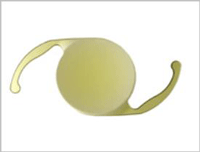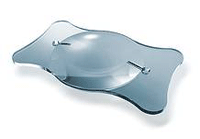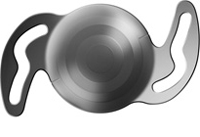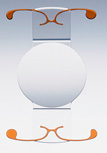NHS Gloucestershire Cataract Thresholds
Some patients with early cataracts in both eyes, or who have good vision in one eye following successful cataract surgery and only an early cataract in their other eye, may not meet the clinical threshold for cataract surgery, even though they may have some mild visual symptoms. These patients will not be referred for NHS cataract surgery until they reach the threshold.
Why has the Primary Care Trust introduced these thresholds?
The overall level of funding for ophthalmology in Gloucestershire has not been reduced, but the available money needs to cover all aspects of eye care. With a fixed budget, the Primary Care Trust has to decide where best to spend the available funds. This system of prioritising referrals is designed to make the best use of available resources so that patients with visually significant cataracts continue to receive prompt treatment.
How will I know when I need surgery?
As soon as your cataracts start to cause symptoms you should visit your Optometrist, GP or Ophthalmologist. They will then take into account the level of vision in both eyes and what impact your cataracts are having on everyday tasks such as your ability to drive, work, read and carry out tasks of daily living. These criteria are assessed to determine the most appropriate time to refer you for surgery. Any threat to your ability to drive or read would make you eligible for surgery. A patient with early symptoms of cataract but who can still read and drive may have to wait longer.
Who can make referrals?
Optometrists, GPs and Ophthalmologists.
Where can I have my surgery?
Your local choices are between Cheltenham General, Tewkesbury and Tetbury. Your GP will have access to all appropriate services across the country via the Choose and Book system and can advise you on which services best meet your needs.
If my eyesight deteriorates earlier than expected will I be able to have the surgery earlier?
Yes, so long as you reach the threshold.
I had cataracts in both eyes, but have had the first eye operated and can now see well out of that eye. Does this mean I will have to wait longer to reach the threshold for my second eye?
As you will be able to see to both read and drive due to your first cataract operation, you will have to wait for your second cataract to deteriorate to the point that it affects your driving and reading in order to reach the threshold for treatment in that eye.
Why Choose Private Surgery?
1: Choice of surgeon
The most important reason to have cataract surgery privately is to be able to choose your surgeon.
All surgeons differ in their ability and this can directly influence the outcome of any surgery, particularly eye surgery. Cataract surgery has the advantage that it is very easy to measure both results and complications. If your surgeon either does not know or will not tell your their complication rate, walk away.
2: Choice of consistent care
Once you have chosen your surgeon, as a private patient you will see them pre-operatively, for the surgery, and for your follow up. This minimises duplications, transcription errors, and uncertainty.
3: Choice of intra-ocular lens
There are now many different types of intra-ocular lens. When going privately you can choose the type best suited to your needs.
4: Choice of anaesthetic
Your surgeon and anaesthetist will be able to offer you a choice of topical, sub-tenons or peri-bulbar local anaesthetic, with or without sedation. If very nervous but otherwise healthy you can also choose to have a full general anaesthetic.
5: Choice of time of surgery
As a private patient you choose when you want your surgery. There is no waiting list. Most patients have cataracts in both eyes. To have both eyes operated on in quick succession maximises your post operative vision.
Questions To Ask Your Surgeon
How many cataract extractions have you done?
In the UK most eye surgeons have done 500 to 1000 cataracts by the time they become a consultant, and then do 300 to 500 per year. The average surgeon induced complication rate reduces from 10% to 2% over the time of training.
How do you audit your results?
Every consultant should have a constant rolling audit of their cataract results using a software package such as Medisoft. They should then be able to provide you with their latest data for outcome and complication rates.
What is your audited incidence of posterior capsule rupture?
Posterior capsule rupture is one of the simplest complications to measure. Essentially we leave the outer layer, the "capsule", of your own lens behind to act as a carrier bag into which we insert your new artificial lens. It is essential that this layer does not rupture, otherwise it is much more difficult to insert your lens in the perfect position, and consequently there is a risk of a worse visual outcome. Certain factors increase the risk of capsule rupture, but these should all be evident prior to starting the surgery. The last factor is simply surgeon error. In the UK the average posterior capsule rupture rate was 2.7% in 2003, and 1.92% in 2009. A good cataract surgeon, when operating on a straightforward cataract with no additional risks, should have an audited rate of 0.5% or less.
How will you treat my astigmatism?
If you have significant astigmatism your surgeon should have a plan for how to correct it at the time of your surgery. The options include changing the position of the main port into the cornea, separate partial thickness cuts into your cornea, post operative refractive laser surgery and the insertion of special toric intra-ocular lenses. All of these techniques have their place, but one of the most reliable is the toric lens.
Which Intraocular lens do you use?
Each surgeon will have a favourite IOL, but they should also be able to offer you your choice of the available premium lenses.
Intra-ocular Lens Choice
Cataract surgery has advanced to the point that we can now not only remove your cataract, but also correct your long sight, short sight or astigmatism all at the same time, significantly removing your need to wear spectacles.
When you have your cataract removed your natural lens needs to be replaced with an artificial lens. These artificial lenses come in many different powers such that a lens can be chosen to take into account your current need for spectacles and correct that need. There are now many different intra-ocular lenses available.
To know which is best for you, you need to know your current spectacle prescription, and whether you want to continue to wear glasses after your surgery. While many patients are very keen to minimise their spectacle use, there are also a significant number who very much like their glasses, and do not want to stop wearing them.
Intra-ocular lens types:
There are currently four broad types of intra-ocular lens. Mono-focal, toric, multifocal and accommodating.
Mono-focal Lenses
The mono-focal lens is the most popular lens. This type of lens is the lens available on the NHS. The modern mono-focal lenses have now developed to have a curved shape, "advanced aspheric optics" to focus all the available light onto the retina. The power of the lens is chosen to match your eye. The lens is usually chosen to give you the best possible distance vision. As the lens has a fixed focus and cannot zoom in and out you will normally also need to continue to use reading glasses. These lenses do not cause halos or ghosting and help maximise contrast sensitivity, (the ability to see in dim light). Patient satisfaction with the lenses is incredibly high, even if they still need reading glasses, as the quality of the vision with the reading glasses is also excellent.

Bausch and Lomb Sofport
Rayner Cflex
Tecnis
Toric Lenses

A toric lens is shaped so that it can correct your astigmatism. These lenses have all the advantages of the mono-focal lenses but with an additional astigmatic correction built into the curvature of the lens. Like the mono-focal lens you should then have excellent distance vision without glasses but may still need reading glasses for small print.
Rayner Toric
The vast majority of patients have been using reading glasses for years and are quite happy to continue to do so. However a significant number of patients are keen to stop using reading glasses. For these patients there are three options, mono-vision, multifocal lenses and accommodative lenses.
Monovision

Mono-vision is the term given to the technique of inserting a mono-focal lens set for distance in one eye and a mono-focal lens set for reading in the other.
Your stronger or dominant eye is usually operated on first aiming to give you good distance and middle distance vision. Your non-dominant eye is subsequently treated with a lens chosen to give better middle and near vision in that eye. There should be no problem using the eyes together, no blur circles or glare, and significant spectacle independence. As a further advantage, patients who think they may like this solution can try it pre-operatively using a contact lens to the non-dominant eye. For the patients who find this solution comfortable there is no trade off, the overall vision with both eyes open is excellent for all distances.
Multifocal Lenses
Multifocal lenses have the lens curvature adjusted such that some of the light from near, some from middle and some from distance is focused onto the retina at any point of observation. When looking into the distance the distant light rays are in focus with the near rays ignored and vice versa for near. These lenses need to be placed in both eyes and can take some getting used to. They can give the most significant spectacle independence with excellent

near and distant vision but are associated with some patient dissatisfaction due to blur circles, glare and reduced contrast sensitivity. The technology continues to improve and the latest lenses are showing better patient satisfaction than the earlier designs. As a general rule there is still a trade off. In order to do away with your spectacles you have to put up with some side effects.
AT Lisa
Alcon Acrysof Restor
Topcon Lentis M Plus
Accommodating Lenses

Accommodative lenses are based on the theory is that they should move inside your eye and zoom in and out to provide you with the ability to see both near and far, just as your natural lens did when you were younger. In studies, following the lens movement with ultrasound has not always shown enough movement to account for their effect. So how do they work? Patient satisfaction suggests they do improve the ability to see both near and far, with significant spectacle independence and fewer blur circles or glare than multifocal lenses. This has been complicated by the recommendation that the lenses are inserted in slightly different powers in each eye. They may therefore work in exactly the same way as the less expensive mono-focal lenses, by simply setting one eye more for distance and the other more for reading. Surgical opinion is divided, with some surgeons very interested in these lenses and others considering them expensive mono-focal lenses. They have the disadvantage of being more difficult to remove if they cause a problem.
Bausch and Lomb Crystalens HD
The desire to find the perfect lens is driving much research amongst eye surgeons. There is not yet any consensus on which lens combination is best. Each surgeon has their own preference.
There is an additional cost to toric, multifocal and accommodative lenses.
The premium lenses are not routinely available on the NHS at present.








